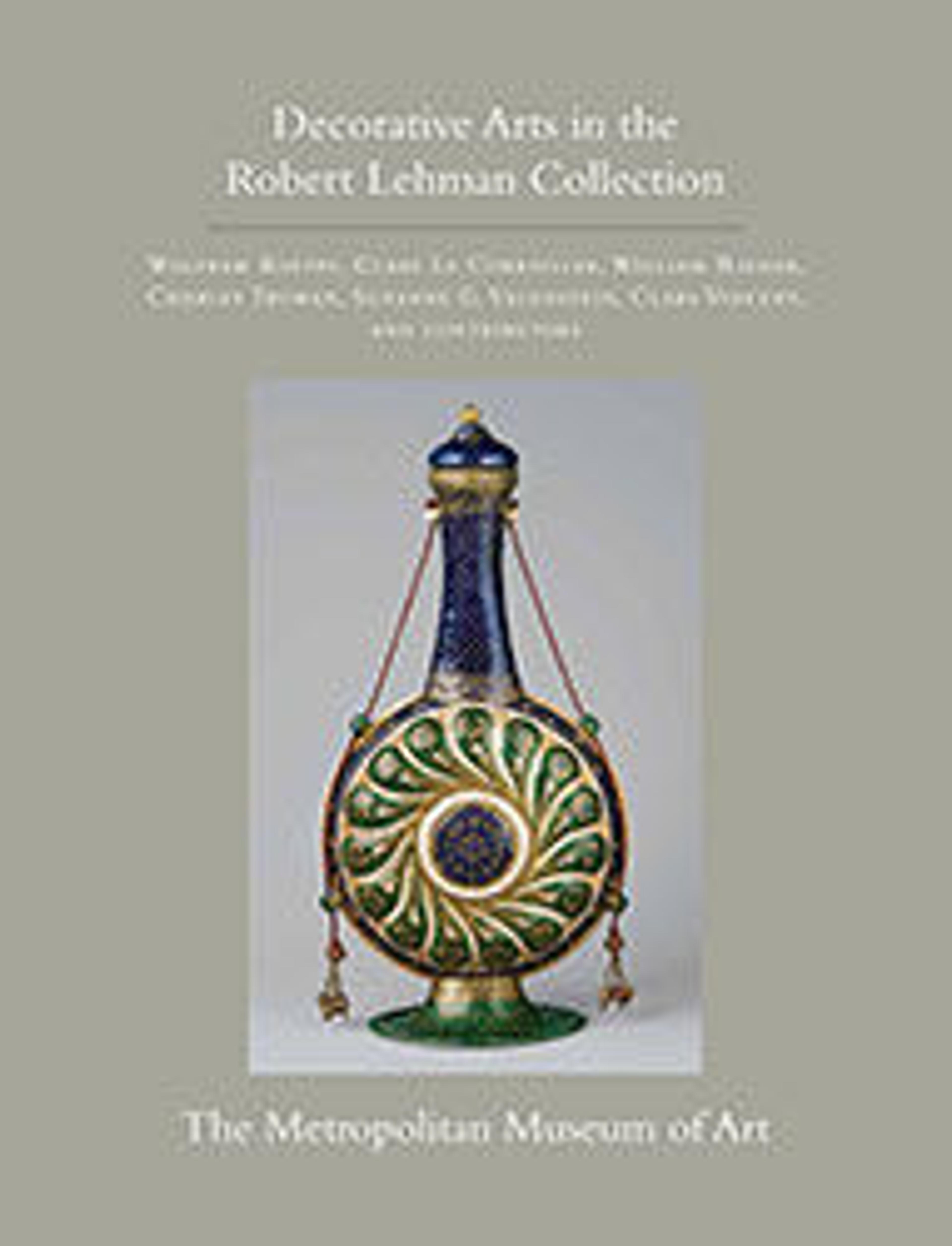Standing Cup and Cover Supported by an Enchained Turk
This domed cup supported by the figure of a bearded Turk is richly decorated in many precious materials worked in a variety of techniques. The carved alabaster figure, enchained in jewels, bears a jade cup and cover surmounted by an elaborate finial. Pierced gold hunting figures, trophies, classical statues, birds, and beasts radiate from the center of the cup and lid, all enframed in garlands and blossoms. Eight chalcedony male and female busts, some with rose diamonds, rubies, and enameled coronets, encircle the cup and its base. The finial has a circular medallion of chalcedony and gold that displays the double eagle of the Habsburg empire. The coat of arms of three ecclesiastical electors appears on the opposite side of the medallion. The front and back of the cup also display the arms of electors: Brandenburg, Hanover, Bohemia, and Sachsen, Pfalz, Bayern, respectively. The base is jade with pierced gold ornament, the whole enriched with cameos, rubies, and rose diamonds.
The nine electoral arms in the cup's decorative scheme suggest that the piece was made at the turn of the eighteenth century, as an official gift to be presented on the occasion of an imperial election in Frankfurt am Main. It was there that Holy Roman Emperors were elected and crowned. Indeed, as so many specialists were called upon to complete the cup, it was certainly made in a prosperous town like Frankfurt, where the finest goldsmiths flourished. The cup's style of decoration would suggest that it was made and held in readiness for the crowning of Charles VI as Holy Roman Emperor (r. 1711-40). Casting the supporting figure as a Turk, enslaved and encumbered, signifies the proud imperial defeat of the Turks at the close of the seventeenth century.
The nine electoral arms in the cup's decorative scheme suggest that the piece was made at the turn of the eighteenth century, as an official gift to be presented on the occasion of an imperial election in Frankfurt am Main. It was there that Holy Roman Emperors were elected and crowned. Indeed, as so many specialists were called upon to complete the cup, it was certainly made in a prosperous town like Frankfurt, where the finest goldsmiths flourished. The cup's style of decoration would suggest that it was made and held in readiness for the crowning of Charles VI as Holy Roman Emperor (r. 1711-40). Casting the supporting figure as a Turk, enslaved and encumbered, signifies the proud imperial defeat of the Turks at the close of the seventeenth century.
Artwork Details
- Title:Standing Cup and Cover Supported by an Enchained Turk
- Date:ca. 1705–11
- Culture:German, perhaps Frankfurt-am-Main
- Medium:Jade (nephrite), aragonite, chalcedony, banded agate, gold, silver gilt, diamonds, rubies, garnets, enamel, and paint.
- Dimensions:H. 16 in. (40.6 cm)
- Classifications:Jewelry, Precious Metals and Precious Stones
- Credit Line:Robert Lehman Collection, 1975
- Object Number:1975.1.1508
- Curatorial Department: The Robert Lehman Collection
More Artwork
Research Resources
The Met provides unparalleled resources for research and welcomes an international community of students and scholars. The Met's Open Access API is where creators and researchers can connect to the The Met collection. Open Access data and public domain images are available for unrestricted commercial and noncommercial use without permission or fee.
To request images under copyright and other restrictions, please use this Image Request form.
Feedback
We continue to research and examine historical and cultural context for objects in The Met collection. If you have comments or questions about this object record, please contact us using the form below. The Museum looks forward to receiving your comments.
